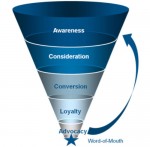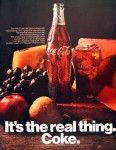- Avoids confrontation. Your boss cowers at the thought of having to deal directly with workplace issues and problem employees. Since issues are not resolved or people held accountable, your group’s performance is mediocre and its effectiveness declines.
- Likes the status quo. Unwilling to “rock the boat” for fear of “upsetting the apple cart” – two of your bosses favorite phrases – employees languish in their comfort zone. Nobody is challenged to reach for the stars or take risks.
- Always the victim. When all the political players and bullies take swipes at you and your group, your boss takes the high road. That way everybody covers their own butts by pointing fingers at you and your people. Your folks become perpetual victims.
- Gives in to whiners. To placate whiny employees and squeaky wheels – – more work and/or burden is placed on others. Eventually, everybody’s doing nothing but complaining, if they know that they can get what they want simply by whining or complaining.
The New Marketing
 The world has changed. We are in the midst of an unprecedented shift of power to the consumer fueled by the virtual megaphone handed to them through social media outlets. When a customer is angry or has a bad experience with a product or service, the old rule of thumb was that they told an average of 10 people about it. In today’s world some could easily be telling 10,000 (or more!). On the flip side, happy customers can be telling many more than the old average of 3 people about their good experience. Marketing executives just need to design initiatives that enable and activate them to do so. That shift can be represented through adapting one of every marketer’s favorite marketing conceptual frameworks, the funnel.
The world has changed. We are in the midst of an unprecedented shift of power to the consumer fueled by the virtual megaphone handed to them through social media outlets. When a customer is angry or has a bad experience with a product or service, the old rule of thumb was that they told an average of 10 people about it. In today’s world some could easily be telling 10,000 (or more!). On the flip side, happy customers can be telling many more than the old average of 3 people about their good experience. Marketing executives just need to design initiatives that enable and activate them to do so. That shift can be represented through adapting one of every marketer’s favorite marketing conceptual frameworks, the funnel.
Infusing Engagement into the Marketing Funnel
With the expansion of the marketer’s toolbox to include social media, marketing is no longer about pushing out one way communications. The marketing world is no longer defined solely by impressions; it’s now a world of interactions. Today’s marketing includes the customer’s voice throughout the process, whether it’s intentional or not. Customers will talk online and comment on a brand’s marketing campaigns, products, services, and even how a company treats employees. It’s not enough to think about how companies communicate outwards; it’s just as important to think about how customers can communicate back, with each other, and arguably most importantly, with new prospects.
A few years ago, Forrester Research published a report on “engagement” and suggested that the marketing funnel has become much more complex in today’s environment. (See image. While the influencing factors are more complicated, the same simple, visual framework as the traditional marketing funnel can be leveraged to show this complexity. The design needs to account for engagement throughout the process rather than looking at it through a lens of static messages we push out.
For example, traditionally, marketers look to create awareness by placing carefully planned messages across appropriate media outlets. Today, customers can create and spread their own messages about a brand through user-generated content and social networks. Traditionally, marketers would hope to influence customers in the “consideration” phase through strategic promotions and sales tactics. Today, user-generated ratings and reviews are frequently enough to convince a customer to make the purchase. Building loyalty is no longer just about loyalty points programs for repeat purchase or sending regular emails to customers. Building loyalty now means entering into a dialogue with them and letting customers participate in more meaningful ways than static customer feedback surveys or a constant barrage of emails announcing special promotions.
Extending the Marketing Funnel
The old marketing funnel generally followed some version of this pattern:
- Awareness > Research/Consideration > Purchase / Conversion
With the widespread adoption of Customer Relationship Management (CRM) in the 1990’s, marketers began focusing more on loyalty or customer retention and brought the funnel one level deeper. The customer’s voice was considered important, but only in the context of customer service and a closed feedback loop. The old thinking was that sending customers regular emails would keep the brand top of mind and that special offers would keep customers from switching to competitors.
As mentioned before, today’s marketers will need to build a more authentic, deeper relationship with customers by truly engaging them to earn their loyalty—and this is how companies can begin to cultivate advocates.
It’s time to extend the marketing funnel one level deeper to account for advocacy. There are two reasons that cultivating and enabling advocacy is critical in today’s world:
- People trust other people more than they trust companies. A recommendation from a friend or family member is still the single most important criteria in making a purchase decision and recommendations from strangers online also hold more weight than marketing messages.
- With the growing voice of the customer online and the “power” (virtual megaphone) handed to them through social media outlets, it’s important to help make sure the voice of happy customers is louder than that of the few unhappy customers.
Cultivating and enabling advocates will generate authentic word-of-mouth, bringing the best new customer prospects into the marketing funnel. The ROI on that? Priceless.
The Art of the Slogan
 A slogan is a noun, usually repeated and persuasive that creates a memorable catch phrase, motto, or jingle, that expresses a particular aim or concept. A concept that you want to stick in your audience’s mind like glue to paper.
A slogan is a noun, usually repeated and persuasive that creates a memorable catch phrase, motto, or jingle, that expresses a particular aim or concept. A concept that you want to stick in your audience’s mind like glue to paper.
Second, what makes a slogan memorable? Brevity is first in line — normally 10 words or less. Rhythm is the only exception to brevity. Rhythm is easier to create if there is an association to the receiver’s past — like a particular jingle on TV during their teen years for those now in their 50s. What slogans still stick in your mind?
Third, what are the benefits for using slogans? Brevity, as mentioned earlier, meets the requirements of today’s fast pace. Slogans also influence decisions, persuade, and add credibility. Our brains are like filing cabinets. A slogan makes it easier to file and pull when needed. For NLPers, neuro-linguistic programming, slogans create anchors. When people repeat the slogan, then consider it filed.
There are five major slogan types:
(1) A feature — a uniqueness or difference between a substance, product or object. Ex: “Write an ebook in 7 days.”
(2) A benefit — a result that someone receives. Remember, this saves you [time or money].
(3) A question — thought-provoking methods. “How would you like to be a millionaire in three years?”
(4) A challenge — a dare. Ex: The Marines, “We are only looking for a few good men.”
(5) A structure — a design or collection put together for a single purpose. Ex: “The Abundance Center holds all the information you will ever need to know on abundance.”
There are seven ways to make a slogan memorable:
(1) Make it exciting
(2) Be boastful or exaggerated
(3) Self-referencing
(4) Metaphorical, playful or humorous
(5) Inspirational or uplifting
(6) To trigger painful memories or possibilities
(7) Use of vivid or freshful language
Common Marketing Mistakes to Avoid
 A good marketing plan can help launch a new business or grow an existing one. Make sure, however, to avoid common marketing mistakes.
A good marketing plan can help launch a new business or grow an existing one. Make sure, however, to avoid common marketing mistakes.
Below are a few mistakes to pay attention to and avoid as you market yourself, your goods or services:
- Not Marketing to a Defined Group: Find your target audience and gear your marketing plan to that audience. Trying to appeal to everyone typically does not work.
- Inconsistency in Your Marketing Efforts: You need to have the same look and feel across all of your ads, promotions, and overall marketing plan.
- Lack of Diversification:Marketing on television, in print or on the Internet alone will reach only a portion of your potential customers. Plan to market creatively through a cross-section of media so that customers become familiar with your brand and your products at different times and in different places.
- Not Focusing on Repeat Business: Repeat business typically makes up 80 percent of customers in most businesses. Too often marketing campaigns are heavily focused on bringing in new customers and not building relationships with current ones.
- Starting Too Late: Time your marketing campaigns to coincide with new products, new services, seasonal sales or an upcoming event that will attract business. This typically means preparing well in advance.
- Not Having a Clear Marketing Message: Marketing messages that are contrived, confusing, too subtle or too long can easily miss the target market entirely. The most ingenious marketing plan is wasted if no one gets it.
- Going Overboard: If it sounds too good to be true it probably is. Too much hype will turn people away.
- Forgetting That Slow and Steady Wins the Race: If you blow your entire marketing budget on a Super Bowl ad, then what can you do next? Marketing means building a reputation over time through ongoing exposure.
- Not Getting Feedback: Test your marketing ideas and do focus groups. Don’t launch it without getting some feedback first.
- Making a Change for the Sake of It: Just because you are tired of your marketing plan doesn’t mean it isn’t working. Too many marketers make changes because they think they have too. Often a tried and true formula will keep working.
Photographing Flat Artwork
 Natural Light
Natural Light
The best way to photograph flat artwork is to use natural light. If possible, bring the piece outside and find an open but slightly shady area. The shade helps protects the artwork from sun damage or curling. Place a white or black poster board on the ground near where the shade ends, as a background, then place the art on top of the poster board. If the art cannot come outside, it is still best to use natural light from a nearby window if you can, or light from a room where the art is hanging.
Taking the Shot
Before you take the shot, compose it so the outside lines are lined up straight in the frame. Do not use a wide angle lens, as it will distort the sides of the art. Instead, aim the camera straight down on the piece, and fill as much of the frame with the art as possible. Use a fast shutter speed. Also, bracket the exposures. Bracketing is when you take one shot regularly, then one overexposed shot and one underexposed shot, so you take three photos of each piece. To overexpose or underexpose the shot, adjust your aperture one f-stop up or down from where it currently is. Some cameras also have built in over- or underexposure settings. You might actually like some of the over- or underexposed shots better!
Reflection
Reflection might be an issue you run into when you shoot flat art, especially if the art has a glossy or laminated finish, or if you use a piece of glass on top of the art to flatten it for the photo. If this is the case, move the camera slightly until you get a shot without a reflection bouncing back. Or, get a piece of black foam core board and cut a hole large enough for you to shoot through. Stick your lens through the hole and shoot away. The foam core board will help absorb any reflection to help keep it out of your photo. If you need to use a flash because you are indoors, it is best to use an external flash, and position it on the side rather than straight at the art to help avoid reflections in the shot. Finally, use your favorite post-production tool(i.e. Photoshop) to add a bit of color warmth into the final shot if needed.
- « Previous Page
- 1
- …
- 30
- 31
- 32
- 33
- 34
- …
- 54
- Next Page »
